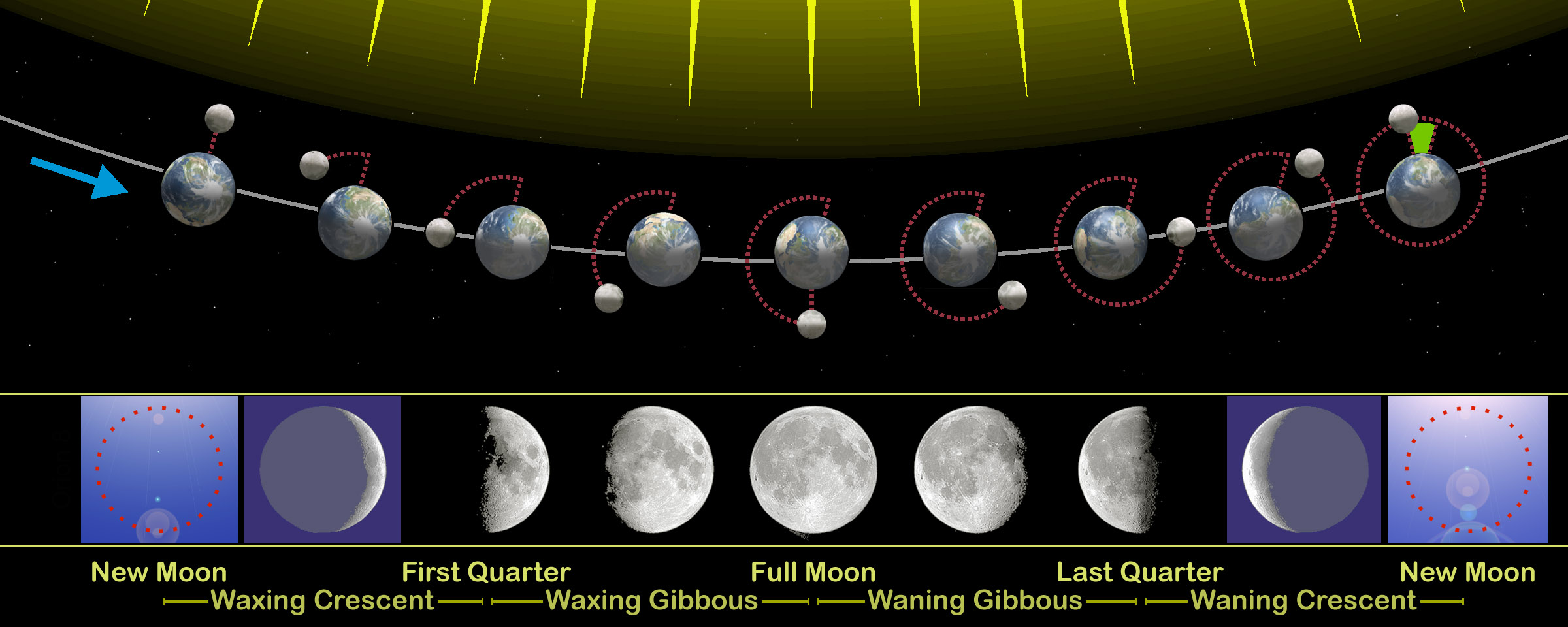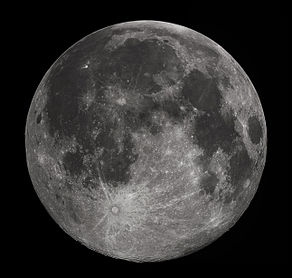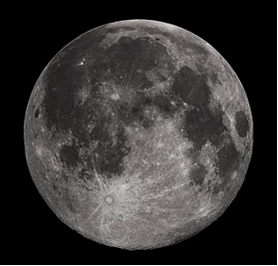


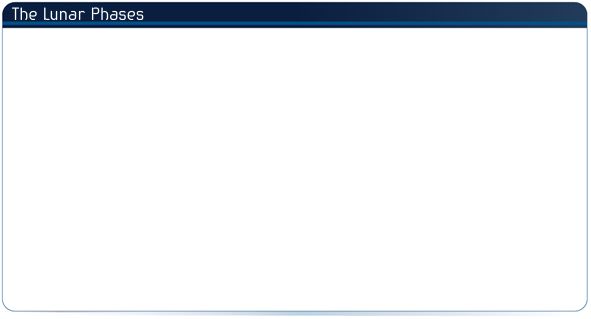

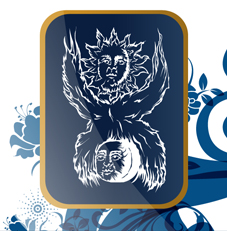


This page is an overview of the lunar phases, which includes some facts and factors we may not have previously considered. A preview of the article can be seen below. You can open up the full view of the article or download it as a PDF with the 'Download PDF' button below, and you can return to the main moon page with the button at the top right.
|
THE MOON AND ITS PHASES © Malvin Artley 2016 It is not only the full moon which has importance for anyone who is involved in any sort of spiritual practice or who is interested in living by the moon. The phases of the moon have more than a little effect on the psyche of people and the world in general, especially as those phases affect one’s physical and emotional nature, with a resultant effect upon one’s thinking. This is true for all but the most enlightened of people, and even enlightened people pay close attention to the cycle of the moon. In the past we lived very closely in synch with the cycle of the moon. For the pages on this site associated with the moon it is perhaps good to remind ourselves of a little of the astronomy of the moon, starting with the lunar phases, and some things we may have forgotten or not realized. The Lunar Cycle: The moon has a cycle of approximately 29 – 30 days. The lunar month begins with the new moon, progresses through the waxing crescent, waxing gibbous, full moon (15th day), waning gibbous, waning crescent and then the dark half of the moon, which includes the new moon, starting the cycle all over again, as we can see in the diagram below:[1]
The timing of these phases and their observances are particularly important for anyone who plants by the moon or who is involved in more concentrated meditative practice. It is also of prime importance for the timing of pregnancy and childbirth. Each phase as described before has a median period of about 3 ½ days. The observance of the lunar phases can be seen in the following table:
The moon has a libration (wobble) as it goes through its phases, which you can see by clicking on the following picture, from the Wikipedia page on the lunar phases: When we add in the phases, the moon appears as follows, again by clicking on the picture: Libration: When we say that the moon has a libration, this means that the moon appears to change size and oscillate (wobble) as it goes through its various phases. This is due to the elliptical shape of the lunar orbit. The moon appears at its largest at the full moon, when it is closest to the Earth. The moon is tidally locked with the Earth, so it always shows the same face to us. However, this changes slowly over time. Due to the Earth’s rotation and the angular relationships imposed by an observer’s position on the planet, roughly 59% of the moon is visible to us over time. Parallax: In addition, there is a parallax effect with the moon, and this is due to an observer’s placement on the Earth. To keep it simple, if there were two observers at opposite sides of the earth and they were stationary, they would see the moon’s phases at times that differ by about four hours a day. However, since the Earth rotates a person would see the lunar phases 12 hours apart, and it would add an apparent libration (oscillation) to the lunar phase. The moon would thus appear to move jerkily through the sky, although this is an illusion. It does not have any effect on the appearance of the moon, however it does affect the accurate calculation of lunar phases. In addition, the moon will appear to oscillate more slowly when it is high in the sky. The parallax position of the moon (observer-based position) can be an important factor in astrological interpretation and predictive work, although few astrologers use it. The standard position of the moon is calculated from the center of the Earth. However, since astrology is an observer-based discipline The Moon and Nature: The moon has a large effect on all watery (liquid) constituents of our planet due to its gravitation influence and the nature of its orbit. The lunar phases have direct effects on nature and reproductive cycles. Many species of animals, for instance, spawn and reproduce in response to the phases of the moon—humans included. For instance, there is a precise, mathematical relationship between the Sun, Moon and human reproduction, which we cannot go into here, but it does exist.[2] In terms of animal reproduction, the most notable effects of the moon are on marine animal reproduction. However, they affect all animals. European badgers, for instance, mate at the new moon. Coral spawns at the full moon. Frogs and toads spawn at the full moon. Reproductive behavior relative to the moon appears to be based more upon the amount of light than on gravitational effects. Then, it is well known that women’s menstrual cycles are closely tied to the cycle of the moon. The tides are directly related to the lunar phases, and to a lesser extent by the elliptical orbit of the Earth around the Sun. Spring tides (maximum) always take place at the waxing lunar crescent and at the waning gibbous phase of the moon. Neap tides (minimum) always take place at the Waxing gibbous and waning crescents of the moon. These are approximate, but the cycle holds. There is about a seven-day interval between spring and neap tides. Spring tides produce high tides that are higher than usual, low tides that are lower than usual and ‘slack water’ time that is shorter than usual, as well as stronger than usual tidal currents on average. Neap tides result in less extreme tidal conditions on average. A spring tide is so named because the water seems to ‘spring’ or ‘burst forth’, whereas neap is a word of Anglo-Saxon derivation that means ‘without the power’. King tides—the largest—take place when a spring tide coincides with the Earth’s perigee to the Sun, at the first part of January each year. The tides are also the lowest of all during these periods. Conversely, the tides are least extreme when the earth is furthest from the Sun, in July each year. Of course, the tides are also dependent on weather conditions. There are other effects, too, to note a few.[3] There is around a 25% increase in animal admissions to veterinary clinics at the time of the full moon. Antlions dig bigger holes at the full moons. Lions are more likely to attack people and to hunt in the days immediately following the full moon, because the other prey animals tend to hide during the full moon. Thus, lions are hungrier just after the full moons. Scorpions tend to be more active at the new moon. Full moons make scorpions glow in the dark due to reflected UV light off the moon. This latter fact is perhaps why scorpions are more active in the new moon, because they are better able to conceal themselves. And then there is the effect on the human psyche, next. The Moon and the Masses: Both the new and the full moons have been noted for their difficulties for people. The new moon seems to have an effect especially upon women, with headaches and a general feeling of malaise. I have seen this consistently in practice. The full moon is renowned for its effects in the health industry, although science disputes the fact. Typically there is an uptake in admissions to hospitals on full moon days. I have spoken with many health professionals who have verified the phenomenon, especially in emergency rooms. Gardening by the Moon: Plants definitely respond to the moon. This is too big a subject to cover here, but there are several excellent sites you may want to peruse in this regard, as follows: http://www.the-gardeners-calendar.co.uk/Moon_Planting.asp http://au.rhythmofnature.net/gardener-calendar http://davesgarden.com/guides/articles/view/868#b The Moon and Buddhism: Spiritually, and to keep things simple, when the moon is waxing (going from new to full, or the first half of the lunar month) it is said to be gaining in light, and all constructive activities are accentuated. It reaches the first quarter at roughly 7 ½ days, and this marks the first of the Mahayana Buddhist puja days for the month, which is dedicated to the female Buddha Green Tara (8th day of the moon). The period from the waxing gibbous phase to the full moon marks the period of preparation for the greatest light, which comes at the full moon. The waxing gibbous phase is approximately 3 ½ days before the full moon, and coincides roughly with the first major puja day of the lunar month (Daka Day, or the tenth day of the moon). The period between the gibbous phases of the moon—waxing and waning—lasts for roughly 7 ½ days and marks the full moon period. The period between the full moon and the next new moon is the waning phase, or when the moon is decreasing in light. This is the time for consolidation of what was gained in terms of insights and initiatives during the waxing and full moon periods. On the 25th day of the moon—approximately at the waning crescent—the 2nd major puja day occurs (Dakinis Day). That puja is dedicated to protector practices, leading into the ‘dark half’ of the moon: the period between the lunar crescent phases, waning and waxing. This latter period, too, lasts for just over a week and includes the new moon. The new moon marks the start of the new lunar month and is dedicated to a reaffirmation of one’s direction on the path, to vows, practices and the like. So, we have the following table to illustrate these phases:
[1] All figures, tables except for the last one, and .gif files are from https://en.wikipedia.org/wiki/Lunar_phase [2] For a brief explanation, see: www.rosicrucian.com/zineen/pamen034.htm This is straight out of E.H. Bailey’s (no relation to Alice Bailey) seminal work, The Prenatal Epoch (1916). [3] Reference for this paragraph is from: http://m.livescience.com/37928-ways-the-moon-affects-animals.html |
|||||||||||||||||||||||||||||||||||||||||||||||||||||||||||||||||||||||||||||||||||||||||||||||||||||||

